

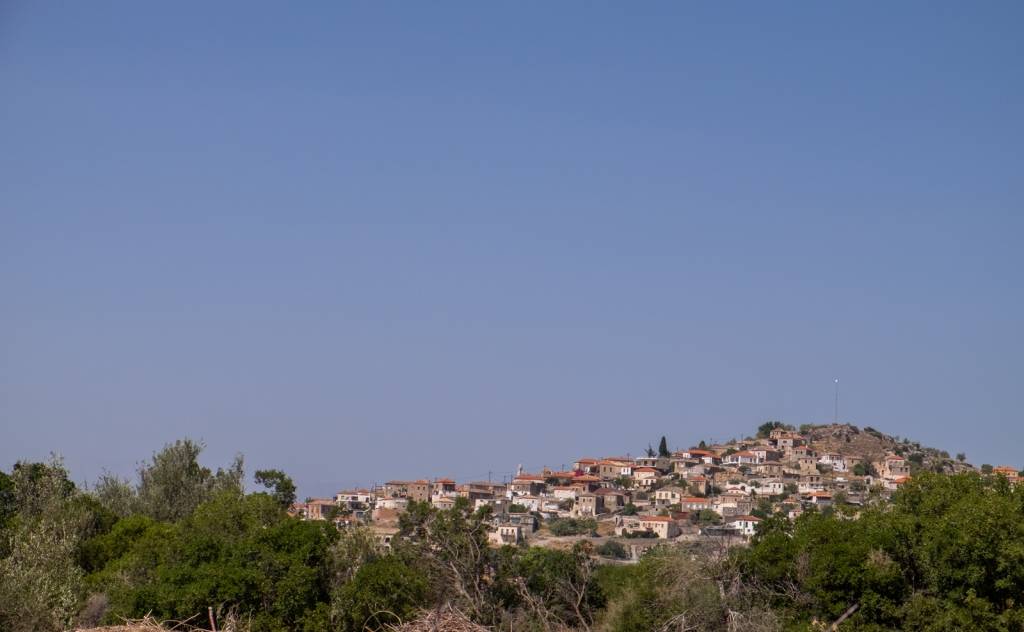
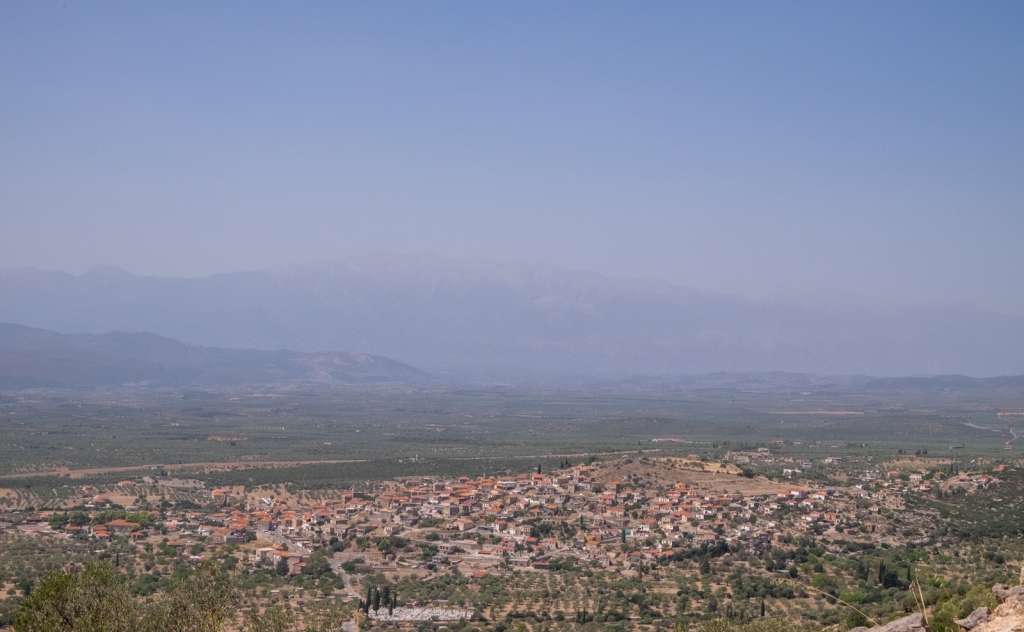
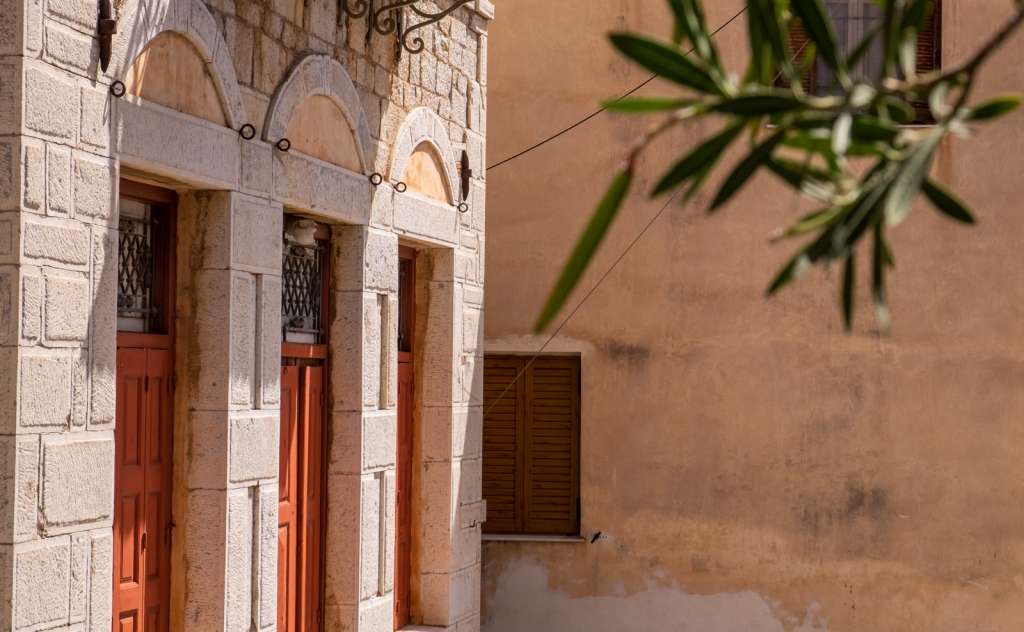

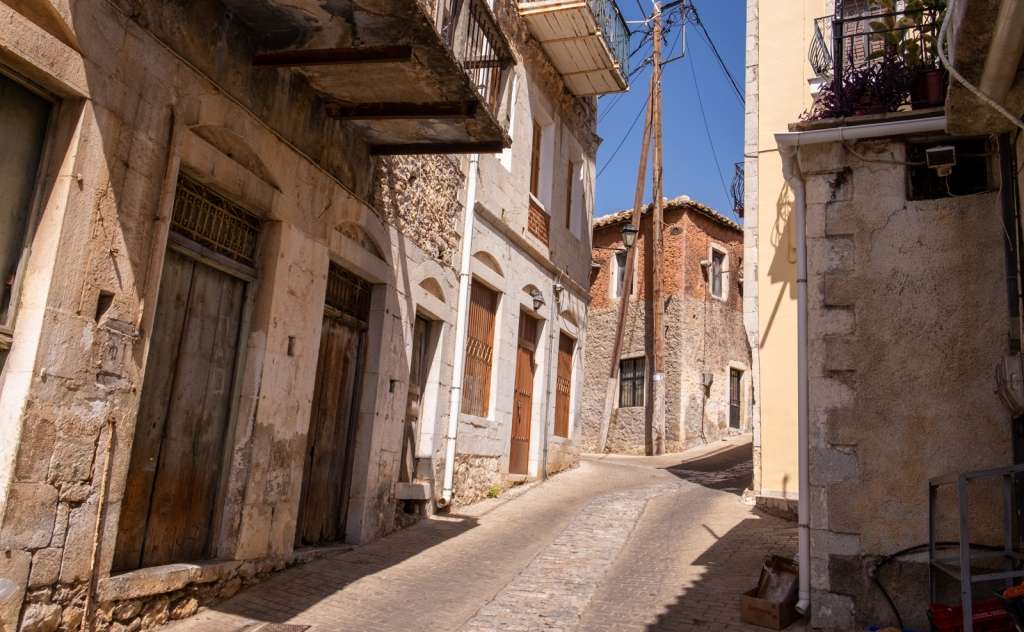
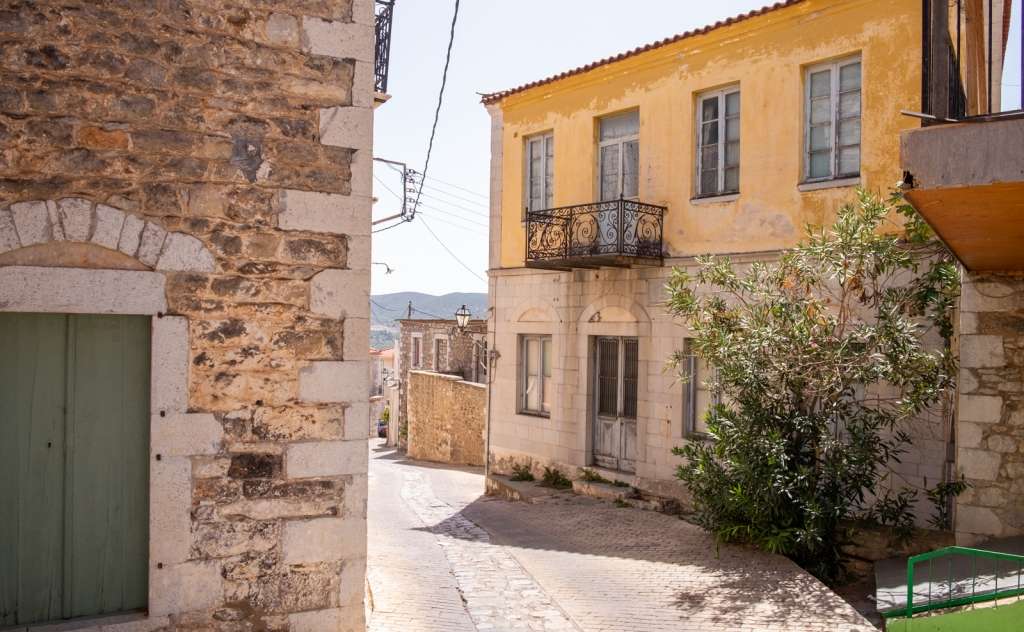

The historic village of Geraki, also known as "Small Mystras", is located 39 km southeast of Sparta, built at an altitude of 300 metres. In the past, it had about 2,500 inhabitants, a population that has now declined and nowadays, there are around 1,400 inhabitants. Geraki is a big picturesque village (Kefalochori), where its inhabitants not only live in the shadow of the historical past but also have a strong presence in modern reality. Visitors, there, can wander among the houses which are/were built according to folk architecture, the cobbled alleys, the traditional cafes and the beautiful square of the village. Textile art has had a long tradition in Geraki, and women are still involved in home-weaving today. The "Geraki rugs" are famous throughout Laconia, while they were awarded in exhibitions in Vienna in 1873 and at Zappeion in 1890. At this point, let's open a parenthesis and say that the rug is a handmade carpet, usually made of sheepskin wool and cotton - an integral part of folk art. The upright loom is used for its weaving and the horizontal one with threads. It is worth noting that the oldest surviving textile of Geraki dates back to the middle of the 17th century. At the same time, the Geraki carpets refer to the dowry agreement of various areas of the Peloponnese, as early as the 18th century. At the central square of the village, one can find the Geraki Women's Agrotourism Cooperative of Eco-Crafts, under the name "Ergani", where visitors can see exhibits that are over a hundred years old.
There are three versions of the origin of the name Geraki. According to popular tradition, the first is identified with the hawk (bird) that flies high in the sky and oversees the area. The second is a paraphrase from its ancient name Geronthrai, while the third version is based on studies that link the city of Jericho with the region. So, as a paraphrase, we have: Jericho-Ierakion-Geraki.
Geraki has had a continuous historical life since prehistoric times and occupies the position of the homonymous medieval settlement, but also of Geronthrai, whose archaeological site is located on a hill quite close to the village. Geronthrai was a city of the Achaeans in Laconia conquered and colonised by the Spartan king Tileklos. During the excavations carried out in 1905, by the British Archaeological School of Athens, in the ancient citadel of the village (the site that is now called "Dontakia"), objects of the Neolithic era were discovered. These findings prove that the place was inhabited by humans almost 6000 years ago. Objects from the Bronze Age were also found in the same excavations. During the Mycenaean period (1800 BC), an urban settlement was created on the site, probably called Geronthrai since then. During the excavations, many objects were found, most of them Mycenaean vessels. In those years, the citadel was fortified with a cyclopean wall, from which, today, many remains are preserved. In later Classical times, the city flourished and became an important political and commercial centre. This is inferred from findings such as sculptures, inscriptions, architectural members, etc. From the wide variety of sculptures, the "Sad Teenager" is best known. It is worth noting that these ancient objects were collected by George A. Papanikolaou, who served as mayor of Geronthrai, for several years. According to traveller Pausanias, at ancient Geronthrai, there were two temples, one dedicated to Apollo and the other to Mars. More specifically, the temple of Apollo was located on the citadel, and there was a golden ivory statue of the god in it. The temple of Mars was situated near the springs, at the Metropolis location, where the remains of an early Christian church are still preserved, which was built on the ancient temple site. Around the temple, there was a grove, where, every year, a feast was held, in which women were forbidden to enter. During Roman times, the city belonged to the Commonwealth of the Lakonians. Inscriptions, consular resolutions and relics of aqueducts and Roman baths (public baths) have survived from the time. During the 3rd and 4th century AD., the city was a great trading centre, as can be deduced from the surviving excerpts from the decree of emperor Diocletian of the year 301 AD. The marble columns, where these excerpts were written, were used as pilasters and as an epitome of the main entrance of the church of Agios Ioannis Chrysostomos located at Kato Vrysi.
The city of Geronthrai continued to flourish during the Byzantine times, where the citadel was further fortified with new walls, parts of which survive to this day. After the conquest of Constantinople by Latin crusaders in 1204, the Franks became masters of Geraki, who were led by the French Baron Guy de Nivelet, who in 1209 built the Castle. The Medieval castle of Geraki dominates the neighbouring hill called "Paleokastro" and is just 2 km east of the village. At the northern peak, one can see the castle and the buildings of the main medieval settlement beneath it. The castle walls are in ruins, while only some fortifications and turrets are preserved on the hilltop side. About thirty temples survive in the Castle, ten of which are located in the medieval settlement. The most remarkable ones date back to the 12th century. The Byzantines kept Geraki for two hundred years. In 1460, however, Mystras, together with the rest of Laconia (and Geraki), except for Monemvasia, fell into the hands of the Turks, who were led by Moammeth the Conqueror himself. Three years later, in 1463, the Castle of Geraki was occupied by the Venetians, but it remained under their rule for only five years, and in 1468, it passed back into the hands of the Turks. During the Turkish occupation, other temples were built in the Castle and the surrounding area. The Castle was abandoned relatively early, around the 15th or 16th century, when Geraki was moved to its current location and became one of the most important villages of the Peloponnese under the Venetian or Turkish rule.
The exceptional monuments of Geraki include the churches of the Assumption of the Virgin Mary (which is also the cathedral of the village), Agios Ioannis Chrysostomos (with frescoes of the 13th-15th century), Evangelistria, Agios Sozon and Agios Nikolaos. Agios Nikolaos is a building of the Palaeologus era. Characteristic is the fresco of Saint Mary of Egypt. Fotis Kontoglou says that this particular fresco is painted in the style of the Pantanassa Monastery of Mystras. It is the only fresco that has been painted according to this style. The rest of the wall paintings of Geraki are ascetic, with an eastern character. Following the path to the top of the Castle, visitors meet the churches of Agia Aikaterini, Agia Paraskevi (with exquisite architecture), Agios Dimitrios (ruined temple with few frescoes), Zoodochos Pigi Eleousa and Agios Georgios. Agios Georgios, in fact, has a magnificently sculpted iconostasis made of soft stone with a Gothic arch. It is a unique folk art that expresses the western influences incorporated into Byzantine churches. On the ridge, on the way to the "Pera Ekklisies" location, the churches of Prophet Elias, Theofania and Taxiarchis (with rare frescoes of the Fall of Jericho) can be found. Around 1700, the Holy Monastery of Saint John was founded, southeast of the village towards Alepochori. In this Monastery and the Monastery of Prophet Elias (at Daphne location), there were many monks until 1833. The new martyr Ioannis also came from Geraki, who died in Larissa in 1773 and whose memory is celebrated on October 21st.
In 1880, people from Geraki were among the first inhabitants of the Peloponnese to emigrate to the United States and Canada, where they founded the first Greek communities. So, if you happen to be in Geraki at the end of July, don't forget to attend the two-day "Feast of the Gerakis' Immigrant", where events such as concerts, traditional dances and photography exhibitions take place.